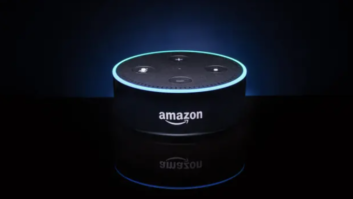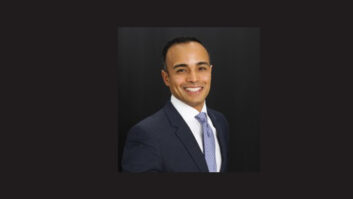
Many readers responded passionately to Jim Withers’ story “AM Radio: My First Real Love” a few issues back. I thought I’d share some of their comments.
“Really well-written and fun article, which I thoroughly enjoyed reading,” posted one who read it at radioworld.com. “Besides the AM radio thing, it gives a good insight into American life of back then.”
Gil Garcia, technical director for Clear Channel Radio Austin and the company’s disaster coordinator (who remembers working for that company when it had only six stations), wrote: “Jim, I just read your article about AM memories in Radio World. I was doing about the same thing you were. I had the HX-11 transmitter and the GR-91 Heathkit receiver when I was about 12. I too started as a ham, then began working in radio in the early ’60s at KRYS, KEYS … I then went to Austin and became the Johnsons’ chief engineer at KLBJ. In high school I loved picking up WLS.”
“Fun article and I can relate to a lot of it,” posted another online reader. “I cut my radio teeth on AM ‘DX’ as a kid in the mid-’70s. I (much) later obtained an amateur radio license, but turning the dial and listening for faint IDs is still my #1 radio hobby.

Online streaming, a reader wrote, ‘doesn’t compare to slowly turning the dials from 530 to 1720 after sunset.’ “I enjoy the plethora of options online streaming radio has brought as well, but it doesn’t compare to slowly turning the dials from 530 to 1720 after sunset. There is something magical about it, and I don’t think I’ll ever tire of it, even if most of the programming on AM broadcast is not my cup of tea.”
Ken Martin at WDNA(FM) in Miami told me that the “old-time” radio photograph we used with the article “brought back memories of hours of great listening, as we had that radio in a number of Buicks in the family. Thanks for the memory.”
Doug Boyd, professor of communication at the University of Kentucky, e-mailed to say the piece brought back a flood of pleasant memories.
“My listening actually started with my driving; I had a license at 14 and a car at 15, and started working in small-town Texas AM radio at 17. Before my father retired from the Navy, we lived in Pensacola, Fla., and spent many evening hours with WLAC Nashville, Tenn. My son-in-law’s father, still living in southern Indiana, and I still remember the address of Ernie’s Record Mart!
“Yes, driving home after sign-off in West Texas there was, indeed, KOMA, and later when driving to and from college in Austin I listened to Gordon McLendon’s KLIF in Dallas,” Doug continued. “Then driving from Austin to Dallas and back late at night there was WLS in Chicago. We loved the station and always shivered when they noted the temperature was –3 on ‘Lake Shore’ when it was 60 degrees in Austin.
“Local FM radio is great, but listening to WLS, for example, let me know about Chicago,” he concluded. “When I first visted the city in my early 30s I felt that I already knew quite a bit about the Windy City from my college AM radio listening days.”
Louis Brown in Chantilly, Va., wrote to tell Jim Withers: “I just got done reading your article in the latest issue of Radio World, and I think I’ve found a kindred spirit. I too have a love affair with AM radio that’s never really gone away.
“I got started in 1963 at 1 kW daytimer WNOS in Winston-Salem, N.C. Since then, my career has had a lot of zigs and zags (including one zig as chief engineer at KIII in Corpus Christi in the late ‘70s) until winding up as director of engineering at system integrator Innovative Technologies in Chantilly.
“Along the way I spent time with the ABC Television Network and 10 years as director of operations at Radio Free Europe. Now that was AM! There’s something awesome about a 250 kW brute-force Class B modulated AM shortwave transmitter. We had four of them at our Holzkirchen, Germany, transmitter site. If memory serves, the combined output of all five of RFE’s transmitter sites was 54 megawatts, operating into curtain antennas with as much as 17 dB forward gain.
“I’m sure modern-day solid-state transmitters are more efficient and more reliable than the old rigs that you and I cut our teeth on, but I miss the glow of the 833s, where you could set the modulation by watching the plates flicker.
“By the way, my father was an engineer at KWTO in Springfield, Mo., back in the 1930s before moving on to become the first chief engineer at KOAM in Pittsburgh, Kan. I guess I caught the bug from him.”
Bill Mackie in Austin, Texas, grew up in a small North Missouri town; much of his life centered around radio. ”I was a regular listener to WHO Des Moines, WDAF Kansas City and KFEQ St. Joseph. I mainly listened to WHO since it boomed in clearly day or night, but I had to switch around to hear my late afternoon radio serials for kids. My dad was an understanding man and always let me sit in the front seat and operate the dashboard radio, which included choosing the programs to hear. Thanks again for bring back some wonderful memories.”
Bob Cockrum in Lubbock, Texas, listened using his Burstein-Applebee AM/shortwave regenerative radio kit. “Ahh, the days when we could tune in one of the Soviet bloc nations to hear ourselves called ‘imperialist dogs.’ Of course, we only had to grab nearby Radio Havana for similar insults. But wait, that’s too far up the AM dial … but only slightly lower, I too remember KOMA in Oklahoma City with its winkin’ blinkin’ weather tower and tons of reverb.
“I suppose I am the 50th person to notice that KOB actually is in Albuquerque, N.M., and it’s KOA that’s in Denver, as Radio World noted in a subsequent correction,” Bob continued. “KOA had a great golden days sound — really authoritative announcers and newscasters, and an entertaining nighttime talk show host, Bill Barker, prominent from his time at the Denver Post for his articles and book on Bridey Murphy.”
And this from an engineer who signs his online posts “Crusty Old TV Tech”:
“KRMD. My father took me on a visit to the Jefferson Hotel, across from the (now completely gone, then just derelict) Union Station in Shreveport, and I saw a DJ working a turntable and board, next to a beautiful, shiny Collins transmitter with big, glowing finals … I was hooked.
“Listening to KRMD, and ‘Seventy-One KEEL,’ WWL, ‘W-L-S, Chicago!’, KOA Denver, the cowbell and WFAA/WBAP, a crystal set, then a Knight Star Roamer, then an NC-98 … It was that early experience, that visit, those faraway voices that intrigued me so that I made comm engineering my profession.
“So,” he concluded, “what would make a kid nowadays so intrigued he decides to go into comm? I wonder …”












